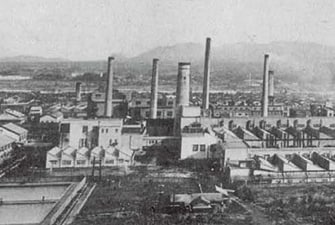#12
Tomorrow and Toray: innovative materials are the foundation of our sustainable future
At a crucial time for humanity, we should be directing our knowledge and ingenuity towards making a more positive and sustainable impact on the planet we inhabit

As our world experiences rapid and often dramatic change, humankind is increasingly looking to advanced materials to protect life on earth.
With innovative chemistry, we are unlocking nature’s secrets to forge winning solutions to the transcendent challenges of our times: global warming, water scarcity, plunging biodiversity, healthcare in an aging world.
Even as so much of our daily existence seems to migrate to the digital world, our physical world has never been more vital for sustaining life – from the air we breathe and water we drink to the health of our natural environment and our very bodies, all of which are sources of wellbeing. That’s why materials that protect and heal, rather than harm and exploit, are fundamental to the mission of entrusting a healthy earth to future generations.
“Whatever the solutions are, materials are at the core of future sustainability and quality of life,” declared scientists at the 2017 World Materials Summit, sponsored by the Council of Europe.
Time to reverse the damage
Climate change and the loss of biodiversity is the gravest threat facing humanity. A landmark UN study warns that one million of the planet’s eight million species of animal and plant life are at risk of extinction – more than at any other time in human history. The tragedy is about more than biodiversity; researchers say such disappearance negatively impacts 80 percent of the UN Sustainable Development Goals (SDGs) relating to hunger, poverty, health, water, cities, climate, oceans and land.
“We are eroding the very foundations of our economies, livelihoods, food security, health and quality of life worldwide,” says Sir Robert Watson, chair of the inter-governmental panel that compiled the report.
Since the dawn of the industrial era, humans have been responsible for the materials and by-products that have degraded our environment. All the more reason why we must today look to the boundless potential of materials as a force for renewal.
“Materials have the power to fundamentally change society,” says Akihiro Nikkaku, president of Japan’s Toray Industries – a company at the forefront of a materials revolution that will be crucial to overcoming the global challenges of climate change, water shortages, resource depletion and healthcare in an aging world.
In startlingly different ways, materials innovation is slowly repairing our social and environmental fabric.
Materials that build a better world
In Morocco, giant nets called a CloudFisher are trapping fog and turning it into drinking water, bringing life’s most precious resource to villagers at the edge of the Sahara Desert. Meanwhile, at the nano level, a polymer membrane developed by Toray – with pores one millionth of a millimeter in diameter – is helping to solve the global water crisis by transforming seawater into freshwater.
Digital technology is being spun into threads and yarns that allow innovators to create smart garments that give us precision health guidance, or let wearers control smartphones with the touch of a sleeve. Elsewhere, it’s nature that is providing the solutions – as researchers turn sugarcane into sportswear and induce mushrooms to grow a biodegradable alternative to polystyrene packaging.
Toray innovations that are making a difference today range from a lightweight carbon fiber (10 times stronger than steel and a quarter of its weight) that dramatically reduces the carbon footprint of air travel, to a resin chip that deciphers the secrets of our genes – helping scientists develop next-generation therapies for cancer and Alzheimer’s disease.
Looking to the future, Toray is developing further groundbreaking materials to open new chapters in the narrative of sustainability.
One example is the world’s first fully renewable PET fiber – produced entirely from biomass feedstock – that may one day allow us to wear polyester that is as eco-friendly as organic cotton. Toray has created laboratory-scale samples of the material and is striving to turn it into a powerful tool for climate-change mitigation. Toray is also using biomass to produce eco-friendly resins and films used in a variety of fields.
Another work in progress is a solar cell that uses organic compounds – instead of rigid crystalline silicon – to conduct electricity. The ultra-thin material absorbs more light than inorganic silicon, and thus works indoors with little light. Flexible enough to be sewn into clothes and thin enough to be coated on windows, it will power the indoor sensors driving a revolution in the Internet of Things.
“As a materials maker, we’re pursuing product development based on a reflection on how materials will be essential to solving problems on a global level, how we can unleash the power of materials to contribute to these efforts,” says Mr. Nikkaku.
“We’re moving forward under the conviction that SDGs and the objectives of the Paris Agreement will not only contribute to society as a whole, but also promote sustainable growth.”
Toray’s mission to improve society goes back to its founding in 1926. In an age in which Japan depended on cotton and wool imports for clothing, the new company strove to enrich lives through domestic production of rayon yarn, thus also contributing to economic development.
It’s a philosophy expressed in a motto that combines imagination with dedication to a greater good: “Contributing to society through the creation of new value with innovative ideas, technologies and products.”



